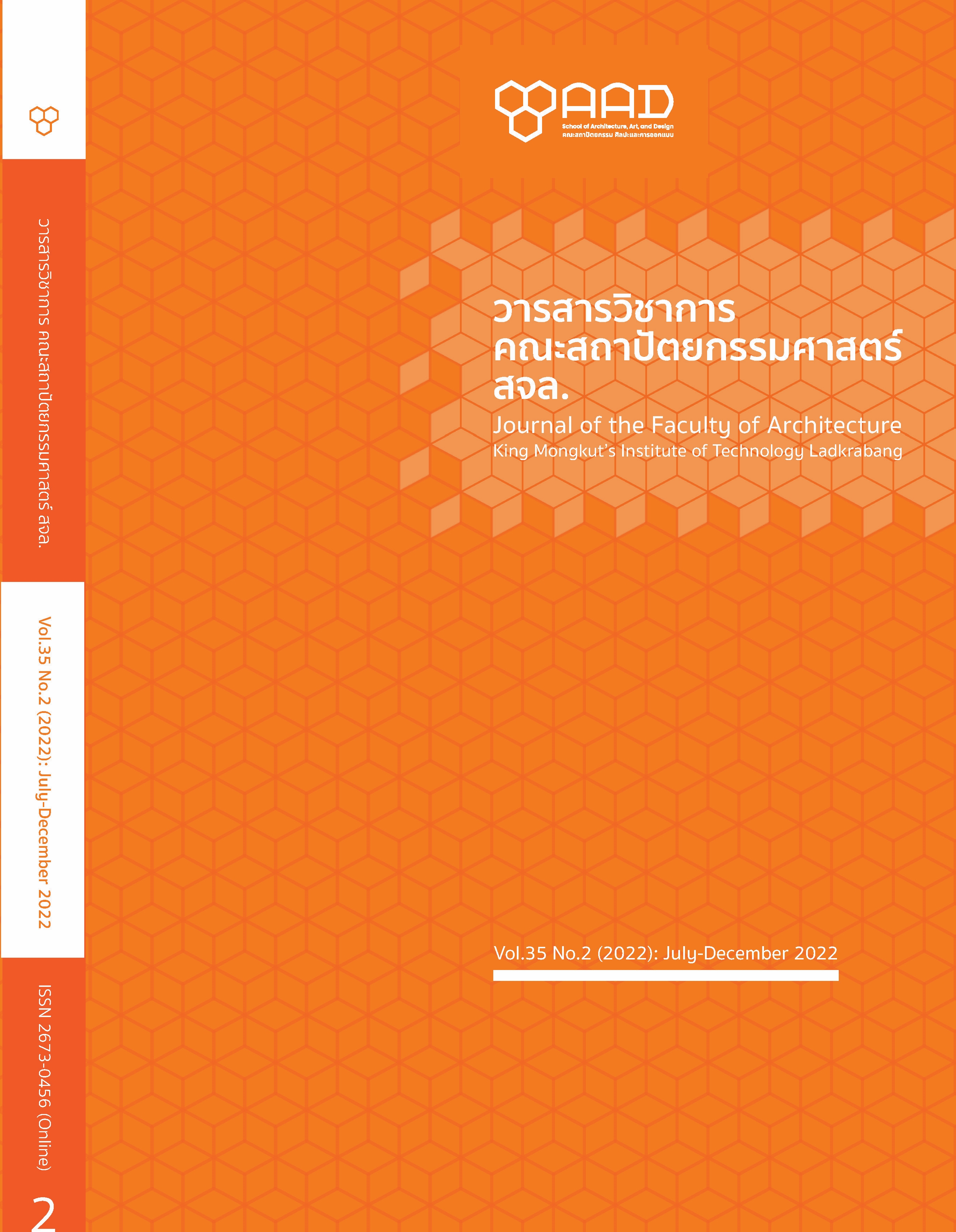The การออกแบบผลิตภัณฑ์จากวัสดุเศษของโรงงานอุตสาหกรรมในเขตภาคกลาง ด้วยแนวคิดการอัพไซเคิล: กรณีศึกษา เขตตรวจราชการที่ 2
Main Article Content
บทคัดย่อ
การศึกษาเรื่องการออกแบบผลิตภัณฑ์จากวัสดุเศษของโรงงานอุตสาหกรรมในเขตภาคกลาง ด้วยแนวคิดการอัพไซเคิล: กรณีศึกษา เขตตรวจราชการที่ 2 มีวัตถุประสงค์เพื่อ (1) สำรวจข้อมูลเศษเหลือทิ้งจากโรงงานอุตสาหกรรม เพื่อนำมาวิเคราะห์ความเป็นไปได้ในการนำมาใช้ประโยชน์ของวัสดุ (2) ทดลองเทคนิคการแปรรูปวัสดุเศษด้วยเทคนิควิธีการต่าง ๆ ก่อนนำไปใช้ในขั้นตอนการออกแบบให้เป็นผลิตภัณฑ์ที่เหมาะสมกับการนำไปใช้งาน (3) ออกแบบ พัฒนาแบบ และสร้างต้นแบบผลิตภัณฑ์ด้วยแนวคิดการอัพไซเคิล ที่มีคุณลักษณะที่พึงประสงค์ทั้งในด้านความคิดสร้างสรรค์ ด้านการผลิต และด้านเศรษฐกิจ โดยใช้วิธีการศึกษาด้วยการลงพื้นที่สัมภาษณ์ผู้ประกอบการ และสำรวจเศษเหลือทิ้งชนิดต่าง ๆ จากโรงงานอุตสาหกรรมในภาคกลาง เขตตรวจราชการที่ 2 รวม 4 จังหวัด ได้แก่ ชัยนาท สิงห์บุรี ลพบุรี และอ่างทอง จำนวน 12 โรงงาน จากนั้นจึงนำวัสดุเศษทั้งประเภทโลหะ และอโลหะที่มีศักยภาพของแต่ละโรงงานมาทดลองแปรรูปด้วยเทคนิควิธีการต่าง ๆ ทั้งการเสริมด้วยวัสดุอื่น การบดแล้วอัดในแม่พิมพ์ การให้ความร้อน การใช้ตัวประสาน การเย็บ ฯลฯ ก่อนกำหนดรูปแบบการใช้งานที่เป็นไปได้ของวัสดุเศษแต่ละชนิด แล้วจึงร่างแบบจำนวน 2-4 ทางเลือกต่อ 1 โรงงาน จากนั้นจึงนำแบบร่างที่ถูกเลือกไปพัฒนา ก่อนการสร้างต้นแบบเพื่อการนำไปประเมินผล โดยผลการศึกษา สามารถสรุปผลตามคุณลักษณะที่พึงประสงค์ 3 ด้าน ที่ใช้เป็นเกณฑ์ในการพิจารณาผลงาน ได้แก่ (1) ด้านการผลิต จากวัสดุที่มีความเป็นไปได้จำนวน 26 ชนิด กลุ่มวัสดุเศษและเทคนิคการแปรรูปที่ถูกเลือกมากที่สุด คือ กลุ่มวัสดุเศษที่มีความคงตัวแบบทนทาน และมีสีสัน ลวดลาย พื้นผิว ในแบบเฉพาะตัว ที่ขึ้นรูปด้วยการเย็บหรือตอกหมุด คิดเป็นร้อยละ 41.67 รองลงมา คือ กลุ่มวัสดุเศษที่มีสถานะเป็นผง แต่มีลักษณะเฉพาะของสีสันและพื้นผิว ขึ้นรูปด้วยการอัดในแม่พิมพ์และผนึกด้วยตัวประสาน คิดเป็นร้อยละ 33.33 และกลุ่มวัสดุที่ถูกเลือกน้อยที่สุด เพราะไม่มีลักษณะเฉพาะของรูปทรง สีสัน และพื้นผิว ต้องนำไปปรับปรุงพัฒนาก่อนใช้งาน ด้วยการย้อมสี หรือนำวัสดุอื่นมาเสริม คิดเป็นร้อยละ 25.00 (2) ด้านความคิดสร้างสรรค์ โดยการเลือกรูปแบบการนำไปใช้งาน พบว่าร้อยละ 83.33 เลือกรูปแบบผลิตภัณฑ์ที่นำไปใช้เป็นของใช้ภายในบ้าน รองลงมา คิดเป็นร้อยละ 16.67 เลือกรูปแบบผลิตภัณฑ์ที่เป็นสินค้าแฟชั่น และ (3) ด้านเศรษฐกิจ ช่องทางทางการตลาดเพื่อการสร้างรายได้ให้กับชุมชนโดยรอบโรงงานถูกเลือกมากที่สุด คิดเป็นร้อยละ 83.33 รองลงมา คือ การมอบให้ผู้มีอุปการะคุณของโรงงาน คิดเป็นร้อยละ 8.33 และการผลิตเพื่อใช้งานในโรงงาน หรือนำไปบริจาคเป็นสาธารณประโยชน์ คิดเป็นร้อยละ 8.33
Article Details

อนุญาตภายใต้เงื่อนไข Creative Commons Attribution-NonCommercial-NoDerivatives 4.0 International License.
This work is licensed under a Creative Commons Attribution-NonCommercial-ShareAlike 4.0 International License.
Copyright Transfer Statement
The copyright of this article is transferred to Journal of The Faculty of Architecture King Mongkut's Institute of Technology Ladkrabang with effect if and when the article is accepted for publication. The copyright transfer covers the exclusive right to reproduce and distribute the article, including reprints, translations, photographic reproductions, electronic form (offline, online) or any other reproductions of similar nature.
The author warrants that this contribution is original and that he/she has full power to make this grant. The author signs for and accepts responsibility for releasing this material on behalf of any and all co-authors.
เอกสารอ้างอิง
กรมส่งเสริมอุตสาหกรรม. (2563). การพัฒนาผลิตภัณฑ์ใหม่. เข้าถึงได้จาก: https://www.dip.go.th/th/category/2020-05-26-19-14-36/2020-05-27-16-41-31.
บริษัทยูไนเต็ดแอนนาลิสต์ แอนด์ เอ็นจิเนียริ่งคอนซัลแตนท์ จำกัด. (2560). โครงการพัฒนาศักยภาพอุตสาหกรรมเชิงสร้างสรรค์ โดยคณะกรรมการส่งเสริมการดำเนินงานพัฒนาประสิทธิภาพองค์กร (กลุ่มที่ 1) ประจำปีงบประมาณ 2560. รายงานฉบับสมบูรณ์ เล่มที่ 1/2. กรุงเทพฯ: บริษัทยูไนเต็ดแอนนาลิสต์ แอนด์ เอ็นจิเนียริ่งคอนซัลแตนท์ จำกัด.
ภคิณ สุวรรณศรี, ทรงวุฒิ เอกวุฒิวงศา และสมชาย เซะวิเศษ. (2560). การศึกษาและออกแบบเฟอร์นิเจอร์จากวัสดุเศษบรรจุภัณฑ์ไม้ที่ได้จากการขนส่ง. วารสารวิชาการศิลปะสถาปัตยกรรมศาสตร์มหาวิทยาลัยนเรศวร. 8(1), 142-154.
ศรุติ พรหมภิบาล. (2563). Upcycling ยกระดับขยะผ่านการดีไซน์. เข้าถึงได้จาก: https://kindconnext.com/kindworld/upcycling.
สิงห์ อินทรชูโต. (2564). Upcycling: พัฒนาวัสดุเศษอย่างสร้างสรรค์. เข้าถึงได้จาก: https://m.se-ed.com/Detail/Upcycling- -พัฒนาวัสดุเศษอย่างสร้างสรรค์/9786161202927.
สุธาสินีน์ บุรีพันธุ์ และปราณี อนันทพรชัยกุล. (2561). การศึกษาแนวทางการใช้ประโยชน์จากเศษหนังแท้เหลือทิ้งเพื่อการออกแบบผลิตภัณฑ์. วารสารครุศาสตร์อุตสาหกรรม. 17(3), 109-117.
เสน่ห์ สำเภาเงิน, วรชัช บู่สามสาย และวิไลลักษณ์ แซ่ปั๊ง. (2564). การออกแบบผลิตภัณฑ์เชิงนิเวศ กรณีศึกษารองเท้าจากเศษหนังแท้. วารสารศิลปกรรมศาสตร์วิชาการ วิจัย และงานสร้างสรรค์. 8(2), 200-232.
สำนักส่งเสริมการศึกษานอกระบบและการศึกษาตามอัธยาศัย. (2560). วัสดุศาสตร์ 3. เข้าถึงได้จาก: http://pattana.nfe.go.th/pattana/download/g.6/20.material/material%201,2,3/3.PDF.
อรุณี ศิลปการประดิษฐ. (2563). ขยะ + ไอเดีย = Upcycling. เข้าถึงได้จาก: https://mgronline.com/mutualfund /detail/963000008080.
อินทิรา นาควัชระ. (2564). การออกแบบผลิตภัณฑ์จากวัสดุเศษอุสาหกรรม จากโครงการพัฒนาศักยภาพอุตสาหกรรมเชิงสร้างสรรค์ กรณีศึกษา เขตตรวจราชการที่ 4. วารสารวิชาการคณะสถาปัตยกรรมศาสตร์ สจล. 23(2), 43-56.


